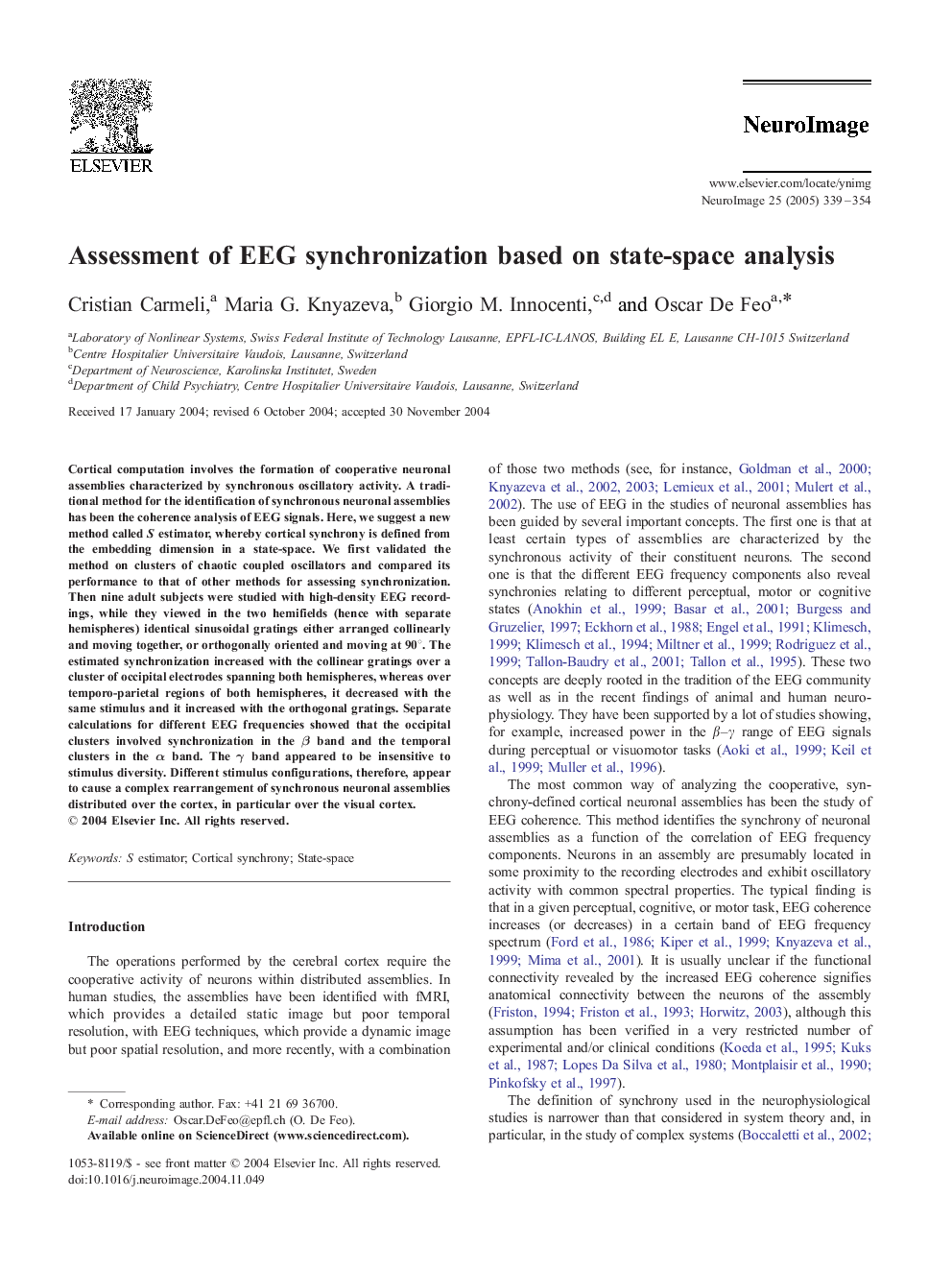| Article ID | Journal | Published Year | Pages | File Type |
|---|---|---|---|---|
| 9198127 | NeuroImage | 2005 | 16 Pages |
Abstract
Cortical computation involves the formation of cooperative neuronal assemblies characterized by synchronous oscillatory activity. A traditional method for the identification of synchronous neuronal assemblies has been the coherence analysis of EEG signals. Here, we suggest a new method called S estimator, whereby cortical synchrony is defined from the embedding dimension in a state-space. We first validated the method on clusters of chaotic coupled oscillators and compared its performance to that of other methods for assessing synchronization. Then nine adult subjects were studied with high-density EEG recordings, while they viewed in the two hemifields (hence with separate hemispheres) identical sinusoidal gratings either arranged collinearly and moving together, or orthogonally oriented and moving at 90°. The estimated synchronization increased with the collinear gratings over a cluster of occipital electrodes spanning both hemispheres, whereas over temporo-parietal regions of both hemispheres, it decreased with the same stimulus and it increased with the orthogonal gratings. Separate calculations for different EEG frequencies showed that the occipital clusters involved synchronization in the β band and the temporal clusters in the α band. The γ band appeared to be insensitive to stimulus diversity. Different stimulus configurations, therefore, appear to cause a complex rearrangement of synchronous neuronal assemblies distributed over the cortex, in particular over the visual cortex.
Keywords
Related Topics
Life Sciences
Neuroscience
Cognitive Neuroscience
Authors
Cristian Carmeli, Maria G. Knyazeva, Giorgio M. Innocenti, Oscar De Feo,
